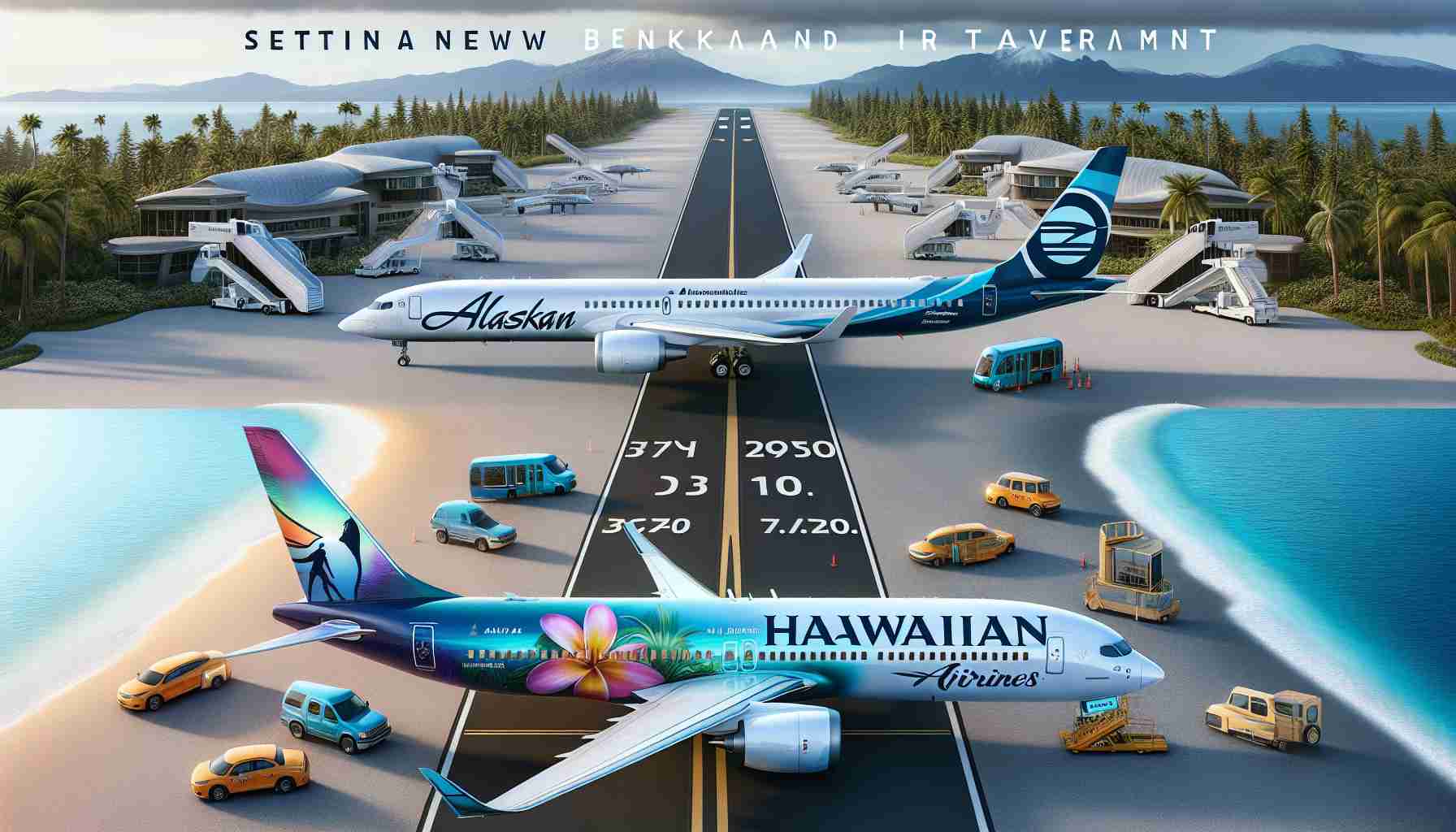In a groundbreaking move for the aviation industry, Alaskan Airlines and Hawaiian Airlines have unveiled a revolutionary partnership that redefines the future of air travel. The two airlines have joined forces to introduce a cutting-edge approach that prioritizes passenger experience and sustainability.
This transformative collaboration represents a paradigm shift in the airline industry, departing from traditional merger practices. Alaskan and Hawaiian Airlines are pioneering a new model that focuses on enhancing customer choices and supporting local businesses, setting a new standard for the global aviation sector.
By leveraging their unique strengths and resources, Alaskan and Hawaiian Airlines are poised to create a more diverse and robust network that caters to the evolving needs of travelers. This innovative alliance opens up a world of possibilities for passengers, offering unparalleled convenience and efficiency in air travel.
The visionary leadership behind this venture has garnered widespread acclaim, with industry experts lauding the merger as a bold step towards transforming the way people fly. Stakeholders have expressed confidence in the synergy between Alaskan and Hawaiian Airlines, anticipating a brighter future for air transportation fueled by innovation and collaboration.
Unveiling New Horizons: Alaskan and Hawaiian Airlines Redefine Air Travel Standards
In their quest to revolutionize the aviation industry, Alaskan Airlines and Hawaiian Airlines have introduced groundbreaking innovations that extend beyond their initial partnership. While the previous article highlighted the transformative collaboration between these two airlines, there are additional key aspects and questions that merit exploration.
What are the Most Important Questions Surrounding Alaskan and Hawaiian Airlines’ Innovation?
1. How will the partnership between Alaskan and Hawaiian Airlines impact air travel routes and connectivity?
2. What specific sustainability initiatives are being implemented by these airlines to reduce their environmental footprint?
3. What measures are being taken to ensure a seamless passenger experience across both airlines’ networks?
4. How do Alaskan and Hawaiian Airlines plan to differentiate themselves from competitors through their innovative approach?
Key Challenges and Controversies Associated with the Topic
While the collaboration between Alaskan and Hawaiian Airlines presents numerous advantages, there are also challenges and controversies that could arise:
1. Regulatory Hurdles: The integration of operations and resources between two distinct airlines may face regulatory scrutiny and approval hurdles.
2. Operational Efficiency: Coordinating schedules, services, and technology systems between Alaskan and Hawaiian Airlines could pose logistical challenges.
3. Customer Expectations: Meeting the high expectations set by this innovative partnership may prove challenging and require ongoing enhancements to services.
Advantages and Disadvantages of Alaskan and Hawaiian Airlines’ Innovation
Advantages:
– Enhanced Customer Choice: Passengers can enjoy a wider range of flight options and services through the combined network of both airlines.
– Local Business Support: The collaboration supports local businesses in Alaska and Hawaii, fostering economic growth in these regions.
– Sustainability Focus: By prioritizing sustainability, Alaskan and Hawaiian Airlines demonstrate a commitment to reducing the environmental impact of air travel.
– Innovation Leadership: This partnership positions both airlines as industry leaders in driving innovation and setting new standards for air travel.
Disadvantages:
– Integration Complexity: Merging operations and services can pose integration challenges that may impact service reliability in the short term.
– Competitive Pressures: Other airlines may respond to the innovative practices of Alaskan and Hawaiian Airlines, leading to increased competition in the market.
– Cost Considerations: Implementing advanced technology and sustainable practices may entail higher operating costs, which could potentially affect ticket prices.
As Alaskan and Hawaiian Airlines push the boundaries of air travel innovation, stakeholders and passengers alike are eager to witness the continued evolution of this transformative partnership.
For further insights into the aviation industry and airline innovations, visit International Air Transport Association.



